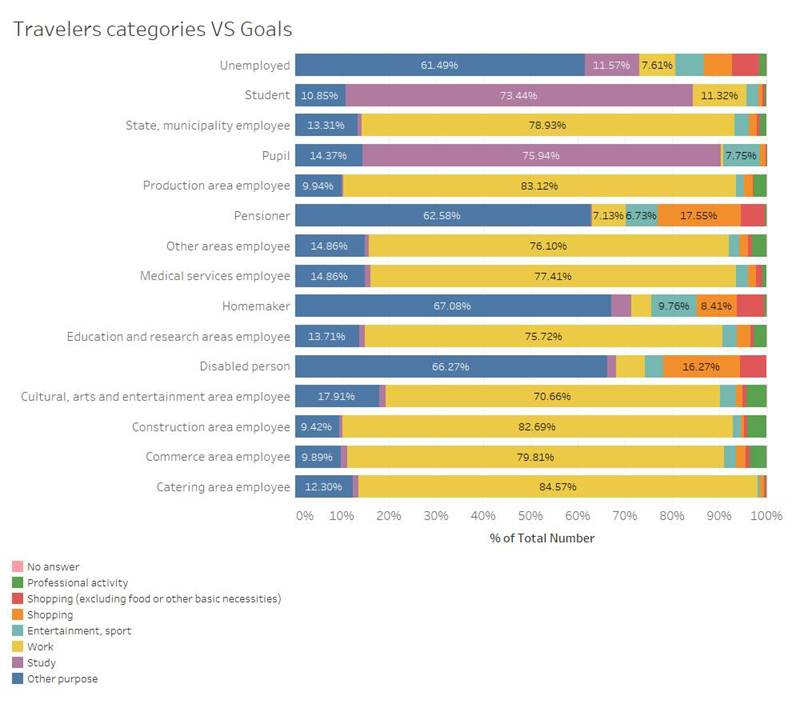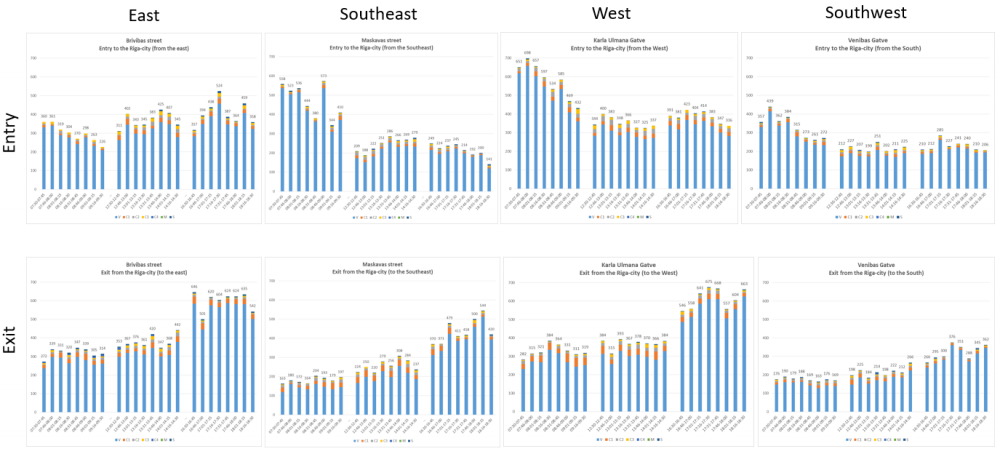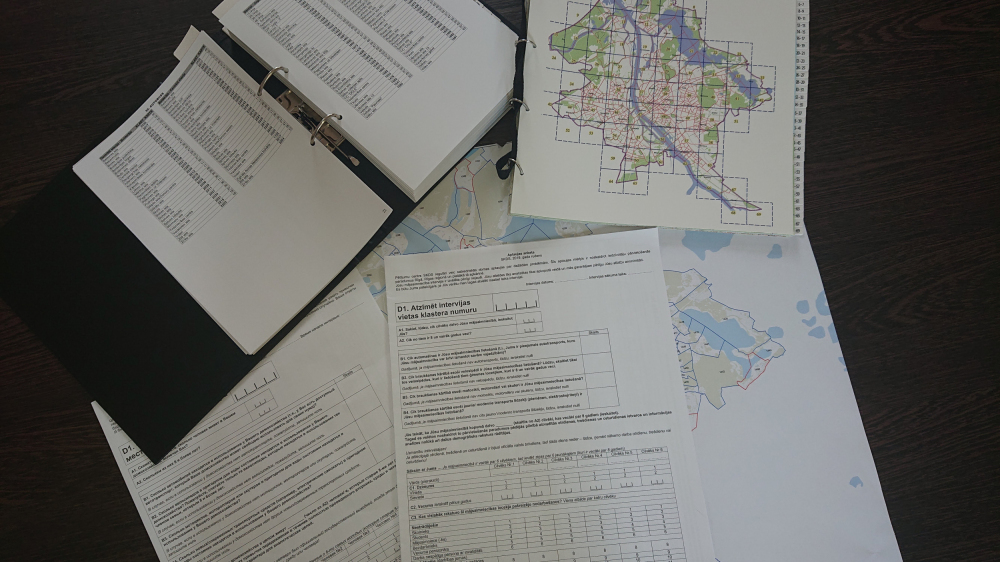The city of Riga is the capital of Latvia with more than 632 000 inhabitants, which is approximately 33% of the whole population in Latvia. Riga metropolitan area has 1.1 million inhabitants. All these aspects provide a considerable number of commuting trips. Every morning, 86 000 commuters travel to Riga and 29 700 from Riga – this creates traffic jams and increase emissions. The Transport Simulation Model of Riga compiles the data about residents' trips (origin-destination) and the purpose of these trips (production-attraction). One of the key goals of the SUMBA project is to significantly update the existing macroscopic transport model of the Riga City Municipality, considering two sub-models: demand model and supply model. The updates to the demand model will be done using a household travel survey. Traffic counting will be used for validation and calibration purposes of the demand model.
The household survey was conducted during the spring and autumn of 2019. It was conducted by the research center SKDS and Transport and Telecommunication Institute (TSI). The target group included residents of Riga and Riga metropolitan area from the age of 8. Face-to-face interviews took place at the respondent's residents where they were given tablets with questions about their trips on last Tuesday, Wednesday and Thursday. The survey was organised in two languages – Latvian and Russian and was performed in private households only. Samples were gathered from 5 317 households covering about 40 000 trips. 53% of the respondents were female and 47% male.
Key results from the survey:
- The main purpose of commuting is going to/from work and studies.
- The transport mode split in Riga: 46.43% - users of trams, trolleybuses, buses and minibuses; 34.7% - car users; 7.31% pedestrians and 3.45% cyclists.
- The metropolitan area transport mode split represents journeys to and from Riga: 42% - public transport users, 38% - car users, ~3% of cyclists.
- Most car users are male (55.98%), with 30.25% of female respondents using cars.
- Public transport users are mostly female (45.56%), with only 26.42% of male respondents using public transport.

Traffic counting was used for two purposes: calibration of the origin-destination matrices developed based on data from the household & mobility survey and adaptation of origin-destination matrices for different time slices of the simulation model (for day and evening peak hours). 50 traffic counting points across urban area of Riga city were identified including on bridges across the Daugava River; viaducts across railroads; main roads connecting urban and suburban area and urban roads with most intensive traffic.
Based on Riga municipality recommendations, the traffic survey was conducted in autumn 2019 on a Thursday with normal weather conditions and without any global social events or school holidays. Counting was conducted in the morning, day and evening peak hours with 15 min interval. Respecting technical specification of the project, six types of vehicles were considered during traffic counts: passenger vehicles, light cargo vehicles, mid cargo vehicles, cargo vehicles, cargo vehicles with trailer, motorbikes, buses. Some results of the traffic counting in the enter/exit to/from the Riga city are presented in the figure below.

The traffic counting data shows that the most active commuters go to Riga from the Southeast and West directions in the morning. The eastern road has a high traffic intensity in both directions (to and from the city) in the evenings. The highest traffic intensity is in western directions in the evenings.
The provided activities (household survey and traffic counting) are necessary for transport planners and mobility experts in their decision-making. The updated transport simulation model helps to analyse the Riga Metropolitan area development scenarios.

